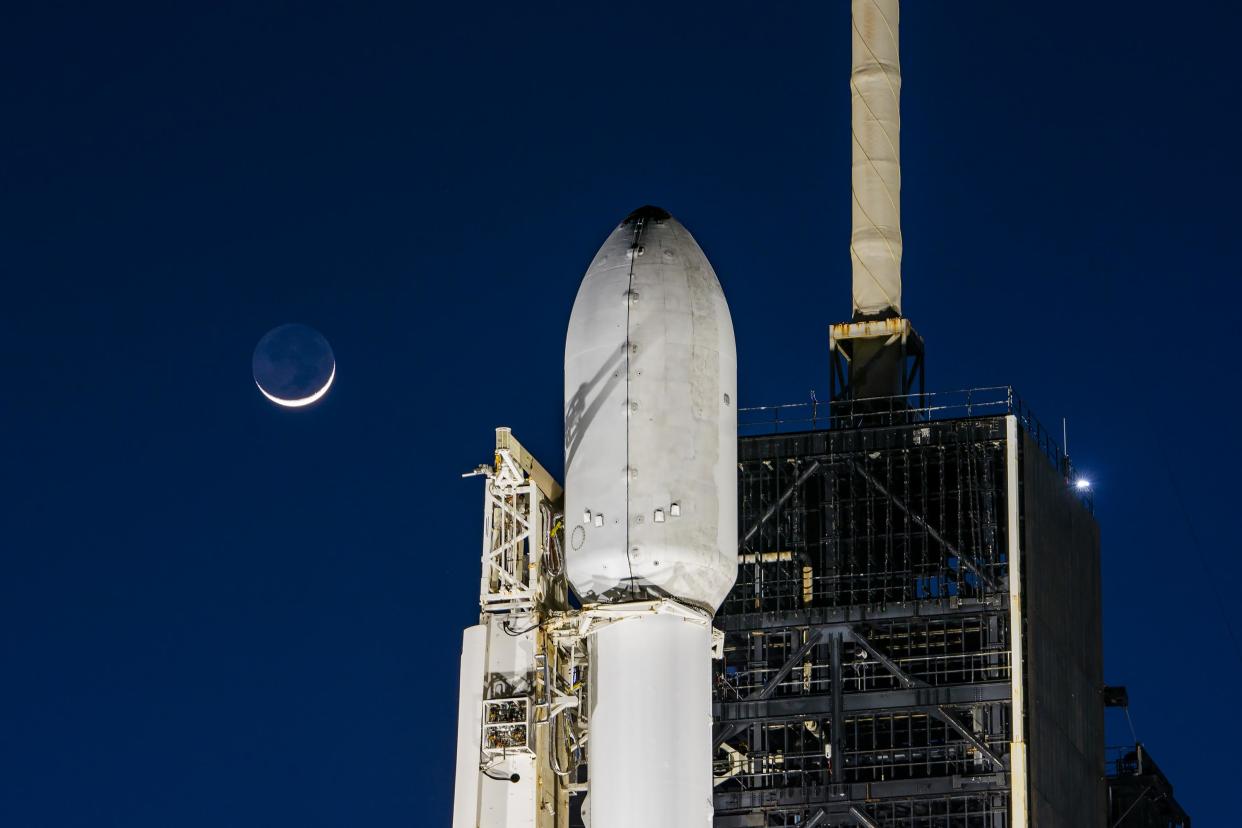Intuitive Machines lunar lander en route to the moon after SpaceX launch

Intuitive Machines' first mission to the moon is now underway.
The company’s Nova-C lander, called Odysseus, lifted off on a SpaceX Falcon 9 rocket in the early hours of Thursday morning. The spacecraft will now embark on a eight-day journey to the moon, with a landing attempt scheduled for February 22.
Deployment of @Int_Machines IM-1 confirmed pic.twitter.com/daPrWFkVng
— SpaceX (@SpaceX) February 15, 2024
https://platform.twitter.com/widgets.js
The spacecraft will first enter lunar orbit 24 hours before the landing attempt, and will circle the moon at an altitude of just 100 kilometers. The lander will then try to land near the Malapert A crater, near the moon’s south pole. Onboard Odysseus are six scientific and research payloads for NASA and six commercial payloads; the goal is for those that need access to the lunar surface to be able to operate for up to seven days, until the lunar night sets in.
One of the big challenges will come around 18 hours after launch, when mission controllers will prepare for an “engine commissioning maneuver,” when the main engine will fire for the first time. That engine uses liquid oxygen and liquid methane as propellants (similar to many rockets), which are difficult to store but highly efficient. During this maneuver, engineers will be able to adjust the lander’s trajectory.
The lander will execute two more burns to correct its trajectory before the spacecraft will attempt the burn to insert it into lunar orbit. Flight controllers will go into this maneuver blind, as the spacecraft will be on the far side of the moon and unable to send real-time updates. For descent, Odysseus will have to reduce its velocity by around 1,800 meters per second; for the final 10 kilometer descent, the spacecraft will slow to a rate of one meter per second.
“Terminal descent is like walking towards a door and closing your eyes the last three feet,” the company said in a press kit on the mission. “You know you’re close enough, but your inner ear must lead you through the door.”
If the company succeeds, it will be the first time the U.S. has landed a spacecraft on the moon since 1972 and the first time a privately made spacecraft has landed on the moon — ever.
This is a huge moment for Houston-based Intuitive Machines, which has been developing technology for the moon — and working on this lander in particular — for years. The company went public via a SPAC merger last February to accelerate its plans, which includes this mission and two additional missions to the moon for NASA already under contract.
This morning’s launch was also a huge moment for NASA, which has paid Intuitive Machines around $118 million for the mission under its Commercial Lunar Payload Services (CLPS) program. This is just the second moon mission to embark under the CLPS program; the first, Astrobotic’s Peregrine mission last month, didn’t reach the moon due to a catastrophic propulsion leak.
However, NASA officials are taking a longer view on the program, with NASA’s deputy administrator for exploration in the science mission directorate, saying in a pre-launch press conference that these missions are “a learning experience.”
“We didn’t believe that success was assured,” he said.

